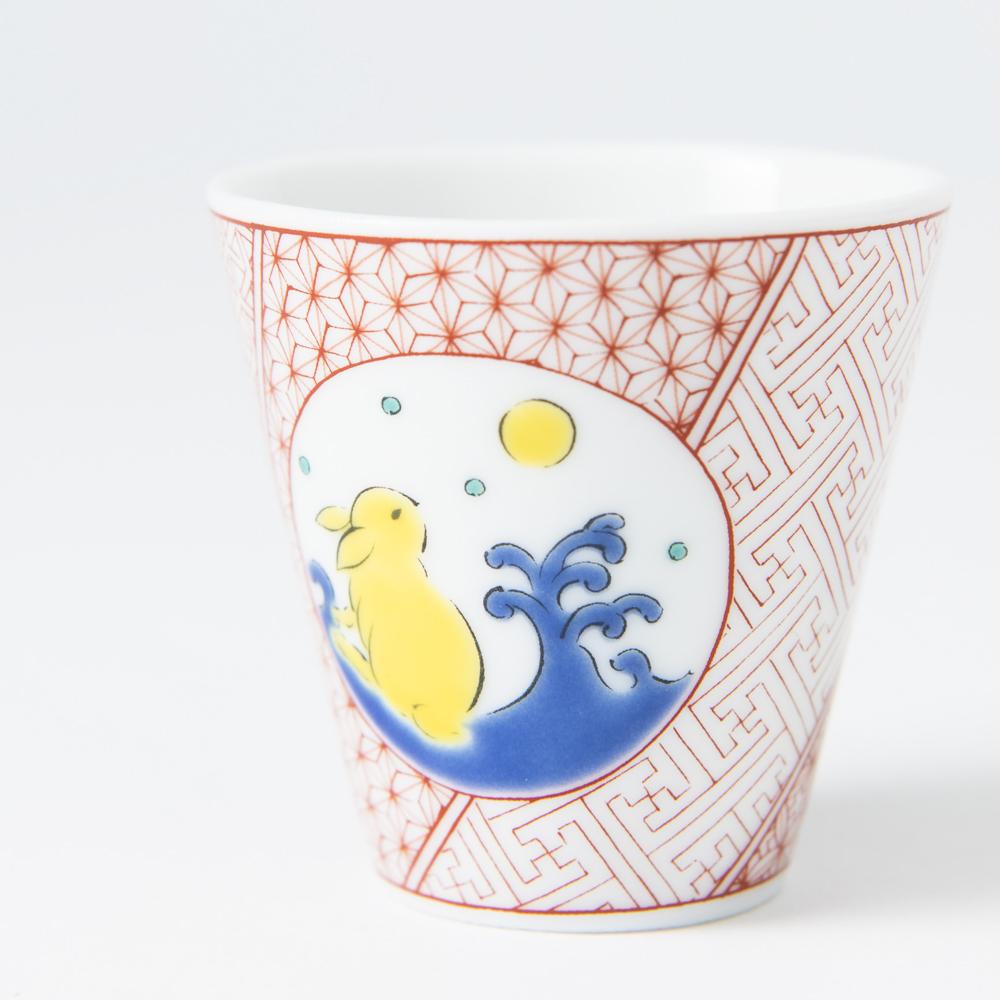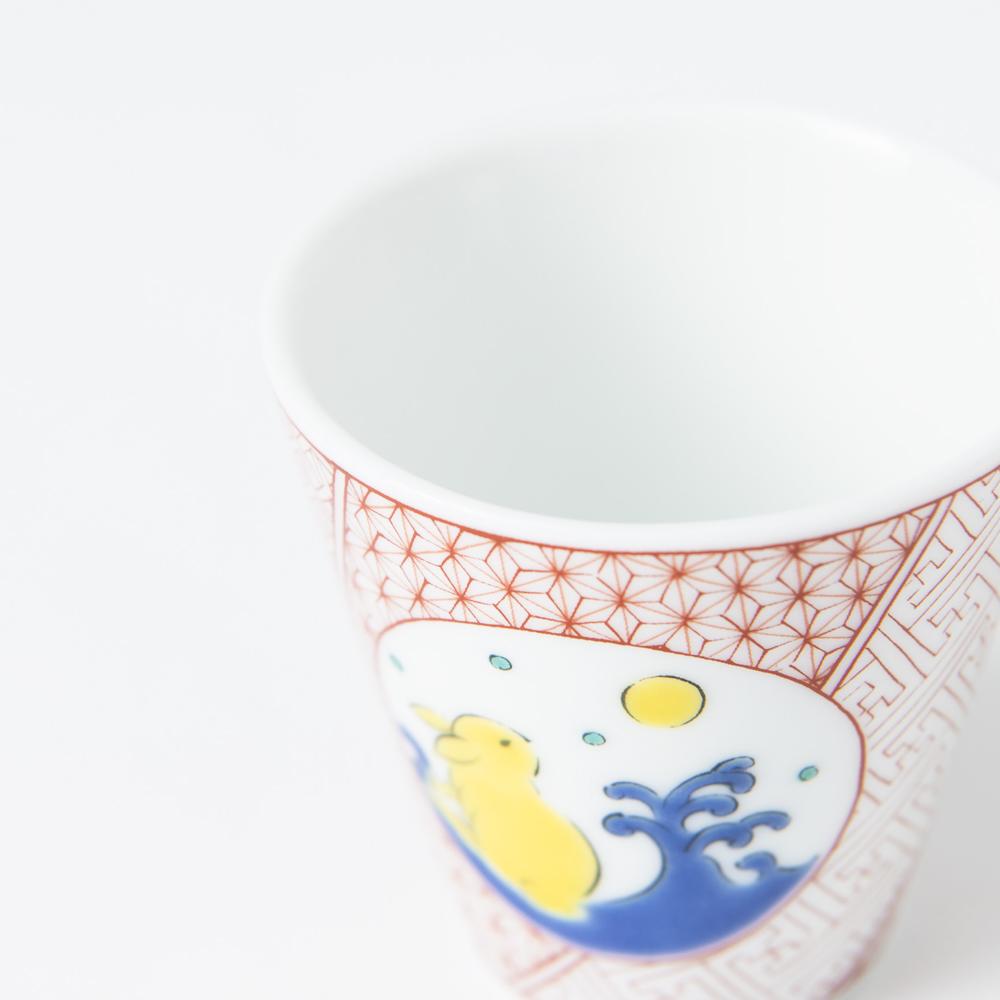












Rabbit and the Moon Ochoko Sake Cup
Estimated Shipping Widget will be displayed here!
This ochoko sake cup features a rabbit and the moon pattern. In Japan, it is said that there are rabbits on the moon and this belief has derived from the shapes of the craters on the moon which are said to look like rabbits.
The smooth porcelain creates a delicate mouthfeel for Sake. With its festive pattern, it is perfect for everyday use as well as for celebrations such as New Year's, birthdays, and housewarming.
DETAILS
| Quantity |
1 |
| Size | D 5.5 cm(2.2 in) x H 5.3 cm(2 in) |
| Capacity | 45 ml (1.5 fl oz) |
| Material | Porcelain |
| Microwave | Yes |
| Dishwasher | Yes |
Maker / Brand
Seikou Kiln, founded in the early Taisho era (1912–1926 CE) in Nomi City, Ishikawa Prefecture, has long been dedicated to the art of Japanese overglaze painting for Kutani ware. Through years of research, the kiln perfected a high-quality technique for transferring designs and patterns using in-house printed sheets. This method preserves the transparency of glassy glazes and the depth of thick overglaze paints, achieving the same richness as traditional hand-painting. Their work has earned prestigious accolades, including recognition in the Japan Tourism Agency's Charming Japanese Souvenir Contest.

Crafts
Kutani ware is a pottery produced in the Kaga region of Ishikawa Prefecture, with a history spanning over 350 years. It is characterized by the heavy brilliance of the five colors of navy blue, red, purple, green, and yellow that are applied to the bold and daring lines. Its long history has evolved through the tireless efforts and enthusiasm of people who have sought innovation while maintaining tradition.

Choose options













Estimated Shipping Widget will be displayed here!
Sake Cups
Explore a refined selection of sake cups crafted by Japan's skilled artisans. From traditional ochoko to modern designs, each piece reflects the artistry and heritage of Japanese craftsmanship. Perfect for both quiet moments and celebratory toasts, these cups bring elegance to your sake experience.

Rabbit
In Japanese culture, rabbits symbolize luck and progress, as their long ears beckon good fortune, and it is said the only direction they hop is forward. Their charm has made rabbit motifs a favorite in Japanese tableware, textiles, and decor.
This collection features beautifully crafted rabbit-themed pieces that brighten any space. Perfect for adding Japanese style, welcoming guests, or creating an auspicious table setting, these unique items bring a touch of luck and make for great conversation starters.


